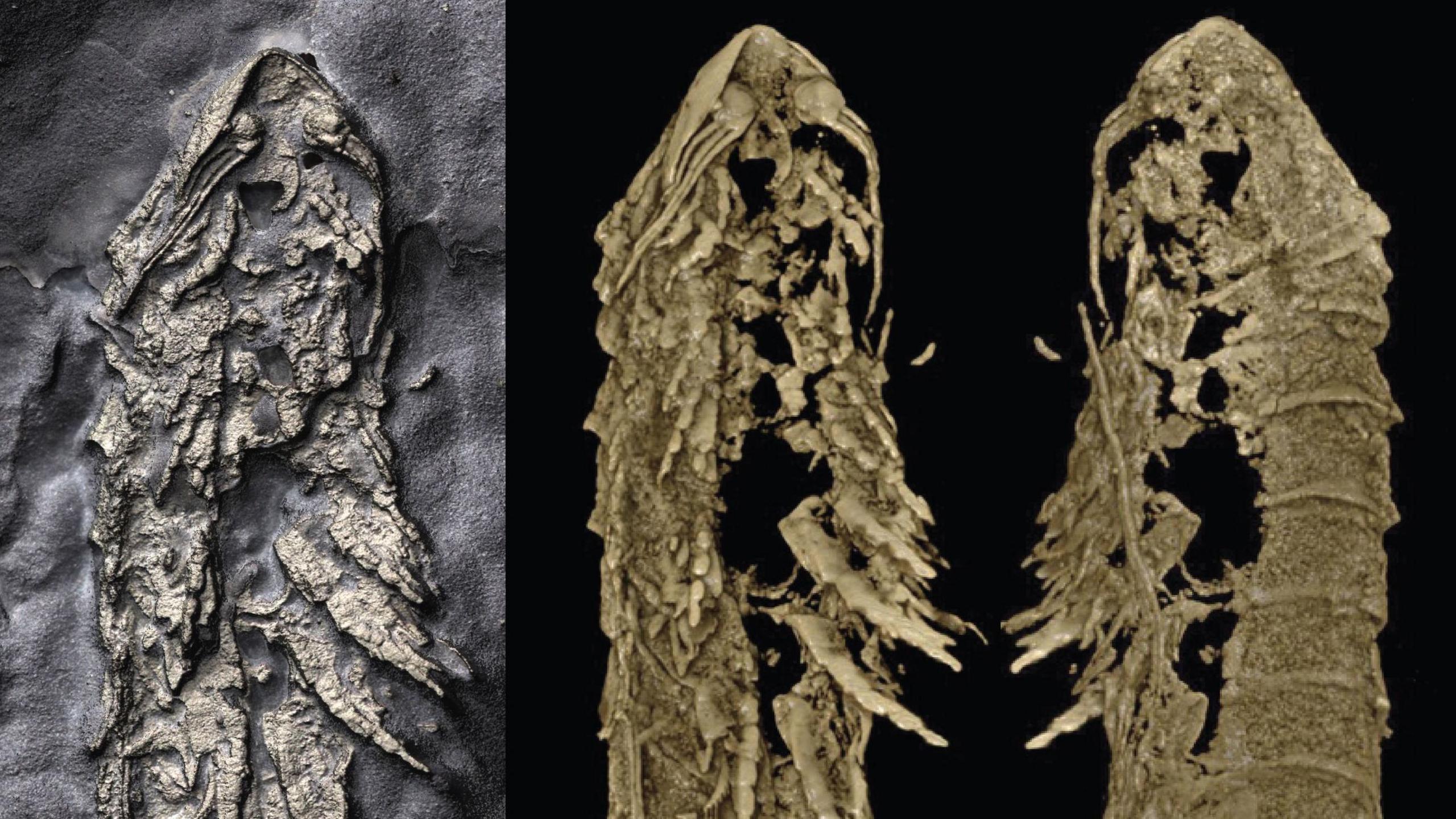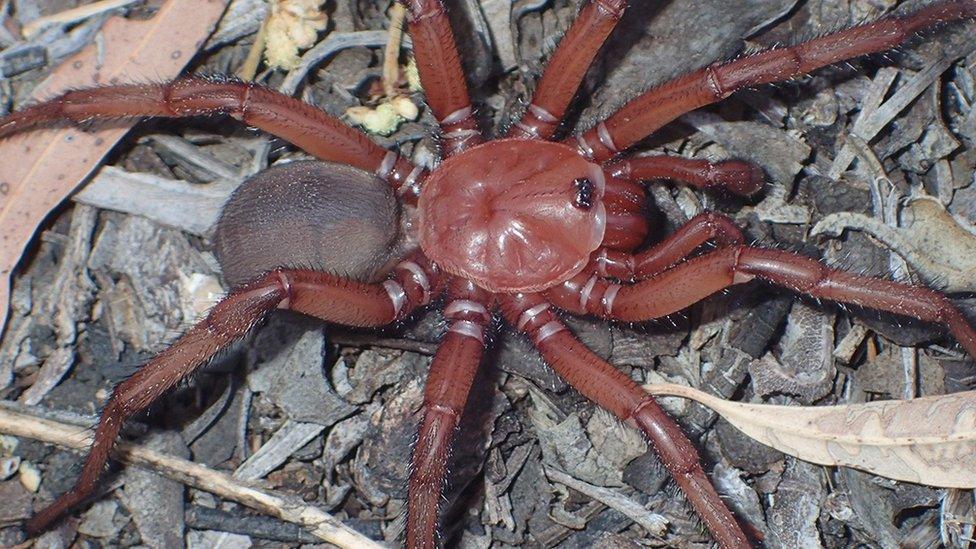450 million-year-old fossil found in fool's gold

An artist's impression of what the Megacheira might have looked like
- Published
Researchers have discovered an ancient relative of our modern-day spiders, encased in a mineral known as fool's gold.
But while the gold might not be real, the fossil certainly is!
Research lead Luke Parry from the University of Oxford said the fossilised creature was so well-preserved, "they look as if they could just get up and scuttle away".
But how is this 450 million-year-old fossil related to modern-day spiders?
All will be revealed.
More stories like this
Schoolgirl discovers fossil of huge prehistoric sea reptile
- Published18 April 2024
Rare worm fossil with internal organs, an 'almost impossible discovery'
- Published1 August 2024
Fossil shows potential new dinosaur species
- Published22 May 2023

The fossil was well preserved in fool's gold
The new species has been called Lomankus edgecombei - and is a type of arthropod.
Arthropods include animals like crabs, centipedes, scorpions and spiders.
One way to identify an arthopod is by their hard outer body, known as an exoskeleton.
This particular fossil is thought to be a Megacheira - a now extinct animal that had a long leg at the front of its body to capture prey.
The researchers believe that the Lomankus had no eyes, and instead used its large front leg to navigate, in a similar way to how insects use their antennae.

Associate Professor Luke Parry described the fossil as being "beautiful" and having a "striking golden colour" because of the fool's gold it was preserved in.
Fool's gold is another name for iron pyrite - a mineral that can appear shiny and golden.
It is also very good at preserving fossils.
The fossil was discovered at a site in New York State in the US which has a layer of rock with lots of well-preserved fossils.
- Published23 March 2023

- Published10 October 2024

- Published26 April 2022

